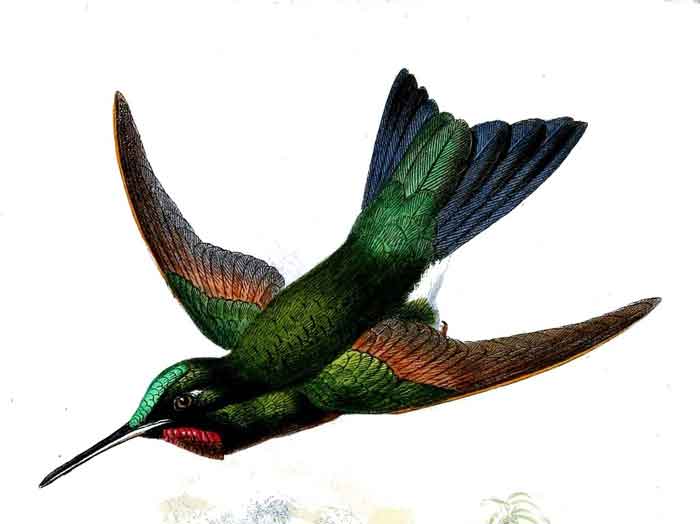
Superregnum: Eukaryota
Cladus: Unikonta
Cladus: Opisthokonta
Cladus: Holozoa
Regnum: Animalia
Subregnum: Eumetazoa
Cladus: Bilateria
Cladus: Nephrozoa
Superphylum: Deuterostomia
Phylum: Chordata
Subphylum: Vertebrata
Infraphylum: Gnathostomata
Megaclassis: Osteichthyes
Cladus: Sarcopterygii
Cladus: Rhipidistia
Cladus: Tetrapodomorpha
Cladus: Eotetrapodiformes
Cladus: Elpistostegalia
Superclassis: Tetrapoda
Cladus: Reptiliomorpha
Cladus: Amniota
Classis: Reptilia
Cladus: Eureptilia
Cladus: Romeriida
Subclassis: Diapsida
Cladus: Sauria
Infraclassis: Archosauromorpha
Cladus: Crurotarsi
Divisio: Archosauria
Cladus: Avemetatarsalia
Cladus: Ornithodira
Subtaxon: Dinosauromorpha
Cladus: Dinosauriformes
Cladus: Dracohors
Cladus: Dinosauria
Ordo: Saurischia
Cladus: Eusaurischia
Subordo: Theropoda
Cladus: Neotheropoda
Cladus: Averostra
Cladus: Tetanurae
Cladus: Avetheropoda
Cladus: Coelurosauria
Cladus: Tyrannoraptora
Cladus: Maniraptoromorpha
Cladus: Maniraptoriformes
Cladus: Maniraptora
Cladus: Pennaraptora
Cladus: Paraves
Cladus: Eumaniraptora
Cladus: Avialae
Infraclassis: Aves
Cladus: Avebrevicauda
Cladus: Pygostylia
Cladus: Ornithothoraces
Cladus: Ornithuromorpha
Cladus: Carinatae
Parvclassis: Neornithes
Cohors: Neognathae
Cladus: Neoaves
Superordo: Caprimulgimorphae
Ordo: Apodiformes
Familia: Trochilidae
Subfamilia: Trochilinae
Genus: Heliodoxa
Species: Heliodoxa branickii
Name
Heliodoxa branickii (Taczanowski, 1874)
Type locality: Monterico, Peru.
Synonyms
Lampraster branickii (protonym)
References
Taczanowski, W. 1874. Description des Oiseaux nouveaux du Pérou central (Plates XIX.–XXI.) pt.1 129–140 BHL; Liste des Oiseaux recueillis par M. Constantin Jelski dans la partie centrale du Pérou occidental. Pt4: 501–564. BHL Proceedings of the Zoological Society of London. Reference page. p. 140 pl.21 fig.1
Vernacular names
English: Rufous-webbed Brilliant
español: Brillante alicanela
The rufous-webbed brilliant (Heliodoxa branickii) is a species of hummingbird in the "brilliants", tribe Heliantheini in subfamily Lesbiinae. It is endemic to Peru.[3][4]
Taxonomy and systematics
The rufous-webbed brilliant was at one time treated as the sole member of genus Lampraster, which in the mid 20th century was merged into the present genus Heliodoxa.[5] It is monotypic.[3]
Description
The rufous-webbed brilliant is 11 to 11.5 cm (4.3 to 4.5 in) long. Males weigh about 5.8 g (0.20 oz) on average and females 5.4 g (0.19 oz). The species' English name comes from its cinnamon-rufous inner wing feathers; the rest of the wing is dusky. Both sexes have a black bill whose mandible base is paler. Males are mostly shining dark green. Their forehead is brighter glittering green and they have an iridescent rosy gorget. The undertail coverts are bright white. The central pair of tail feathers are green and the rest dark blue. Females also have shining dark green upperparts, flanks, and breast. They have a short white streak from the bill to below the eye. The throat and breast are white, with shining green tips to the feathers, and the belly is white to buffy. A gorget is often lacking, and when present is paler and yellower than the male's. The undertail coverts are bright white like the male's, but the blue outer tail feathers have white tips.[6]
Distribution and habitat
The rufous-webbed brilliant has been conclusively recorded only on the east slope of the Andes from central to southern Peru.[6] There are also unconfirmed records in Bolivia.[7] It inhabits the interior and edges of humid montane forest at elevations between 650 and 1,700 m (2,100 and 5,600 ft).[6]
Behavior
Movement
The rufous-webbed brilliant's movements, if any, have not been documented.[6]
Feeding
The rufous-webbed brilliant primarily forages for nectar in the forest's understory and its edges, though the species of flowering plants it feeds at are only slightly known. It also eats small insects.[6]
Breeding
The rufous-webbed brilliant's breeding phenology has not been documented.[6]
Dickcissel male perched on a metal pole singing, with neck stretched and beak open.
Songs and calls
Listen to rufous-webbed brilliant on xeno-canto
Vocalization
The rufous-webbed brilliant's song is "a series of chew notes interspersed with a short, rapid, descending trill." Its call is "a sweet, descending tew".[6]
Status
The IUCN has assessed the rufous-webbed brilliant as being of Least Concern. It has a large range, but its population size is unknown and believed to be decreasing. No specific threats have been identified.[1] It is considered uncommon to fairly common in Peru. It "shows some tolerance of habitat fragmentation, degradation and disturbance; however, outright forest clearance is expected to cause local population declines."[6]
References
BirdLife International (2016). "Rufous-webbed Brilliant Heliodoxa branickii". IUCN Red List of Threatened Species. 2016: e.T22687725A93166189. doi:10.2305/IUCN.UK.2016-3.RLTS.T22687725A93166189.en. Retrieved 6 May 2022.
"Appendices | CITES". cites.org. Retrieved 2022-01-14.
Gill, F.; Donsker, D.; Rasmussen, P., eds. (January 2022). "Hummingbirds". IOC World Bird List. v 12.1. Retrieved January 15, 2022.
HBW and BirdLife International (2020) Handbook of the Birds of the World and BirdLife International digital checklist of the birds of the world Version 5. Available at: http://datazone.birdlife.org/userfiles/file/Species/Taxonomy/HBW-BirdLife_Checklist_v5_Dec20.zip [.xls zipped 1 MB] retrieved 27 May 2021
Remsen, J. V., Jr., J. I. Areta, E. Bonaccorso, S. Claramunt, A. Jaramillo, D. F. Lane, J. F. Pacheco, M. B. Robbins, F. G. Stiles, and K. J. Zimmer. Version 31 January 2022. A classification of the bird species of South America. American Ornithological Society. https://www.museum.lsu.edu/~Remsen/SACCBaseline.htm retrieved February 1, 2022
Schulenberg, T. S. and C. W. Sedgwick (2020). Rufous-webbed Brilliant (Heliodoxa branickii), version 1.0. In Birds of the World (T. S. Schulenberg, Editor). Cornell Lab of Ornithology, Ithaca, NY, USA. https://doi.org/10.2173/bow.ruwbri1.01 retrieved 6 May 2022
Remsen, J. V., Jr., J. I. Areta, E. Bonaccorso, S. Claramunt, A. Jaramillo, D. F. Lane, J. F. Pacheco, M. B. Robbins, F. G. Stiles, and K. J. Zimmer. Version 31 January 2022. Species Lists of Birds for South American Countries and Territories. https://www.museum.lsu.edu/~Remsen/SACCCountryLists.htm retrieved February 1, 2022
Retrieved from "http://en.wikipedia.org/"
All text is available under the terms of the GNU Free Documentation License

